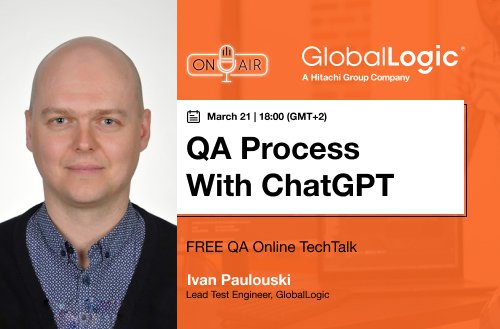- Services
Technology Capabilities
Technology Capabilities- Product Strategy & Experience DesignDefine software-driven value chains, create purposeful interactions, and develop new segments and offerings
- Digital Business TransformationAdvance your digital transformation journey.
- Intelligence EngineeringCreate high-value products faster with AI-powered and human-driven
- Software Product EngineeringCreate high-value products faster with AI-powered and human-driven engineering.
- Technology ModernizationTackle technology modernization with approaches that reduce risk and maximize impact.
- Embedded Engineering & IT/OT TransformationDevelop embedded software and hardware. Build IoT and IT/OT solutions.
- Industries
- GlobalLogic VelocityAI
- Insights
White PapersSeptember 17, 2024Diana SocaciuElevating Romanian Tourism with GlobalLogic: Apuseni App
The innovative banking apps, such as the one we'll explore in this case study, succeed ...
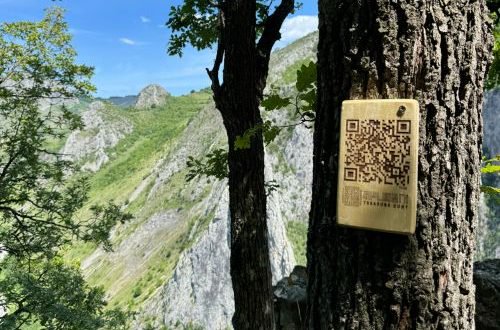 Case StudiesGlobalLogic
Case StudiesGlobalLogicFrom Legacy to Leading-edge: A Global Software Leader’s ...
Discover how GlobalLogic’s AI-powered solutions helped a global software leader migrate...

- About
Sabin, Software Architect, on Connected Cars, Microservices and Continuous Learning
Sabin Chirila, one of our first colleagues in Oradea, has been a key person in our company’s local growth from 5 to 100+ people. His professional journey brought him to a double-hatted role as a Software Architect and Team Leader.
Get a glimpse #BehindTheCode. Learn about the in-car connectivity platform Sabin is currently working on. Discover his passion for sports, reading, microservices architecture, and continuous learning together with his team.
Please describe your career journey and your current role.
I joined the office in Oradea in 2016, right before the official opening of the delivery center. I started as a Senior Java Developer and explored several #perspectives for my professional growth. As the company was new on the Oradea market and aimed to grow, I was involved in the recruitment process. I was also responsible for mentoring and coaching summer interns. In that period, my focus was split between the main monolithic project I was assigned and setting a learning path for new colleagues.
Seven years ago I was promoted to the team leading role. This meant I had less time for internship programs and focused on my team members’ growth instead. In parallel, I gradually moved up on the technical path, to the Senior Software Architect role.
I am currently conducting technical interviews not only for the Java vacancies but also for DevOps. I am working closely with other project leads and project managers to find the best-fitting candidates for our company.
I also like to make technical presentations from time to time. We recently formed an internal technical community focused on SRE (Site Reliability Engineering). I’m one of the community drivers and often host presentations for my colleagues. The last one was about containerization, mainly focusing on Docker.
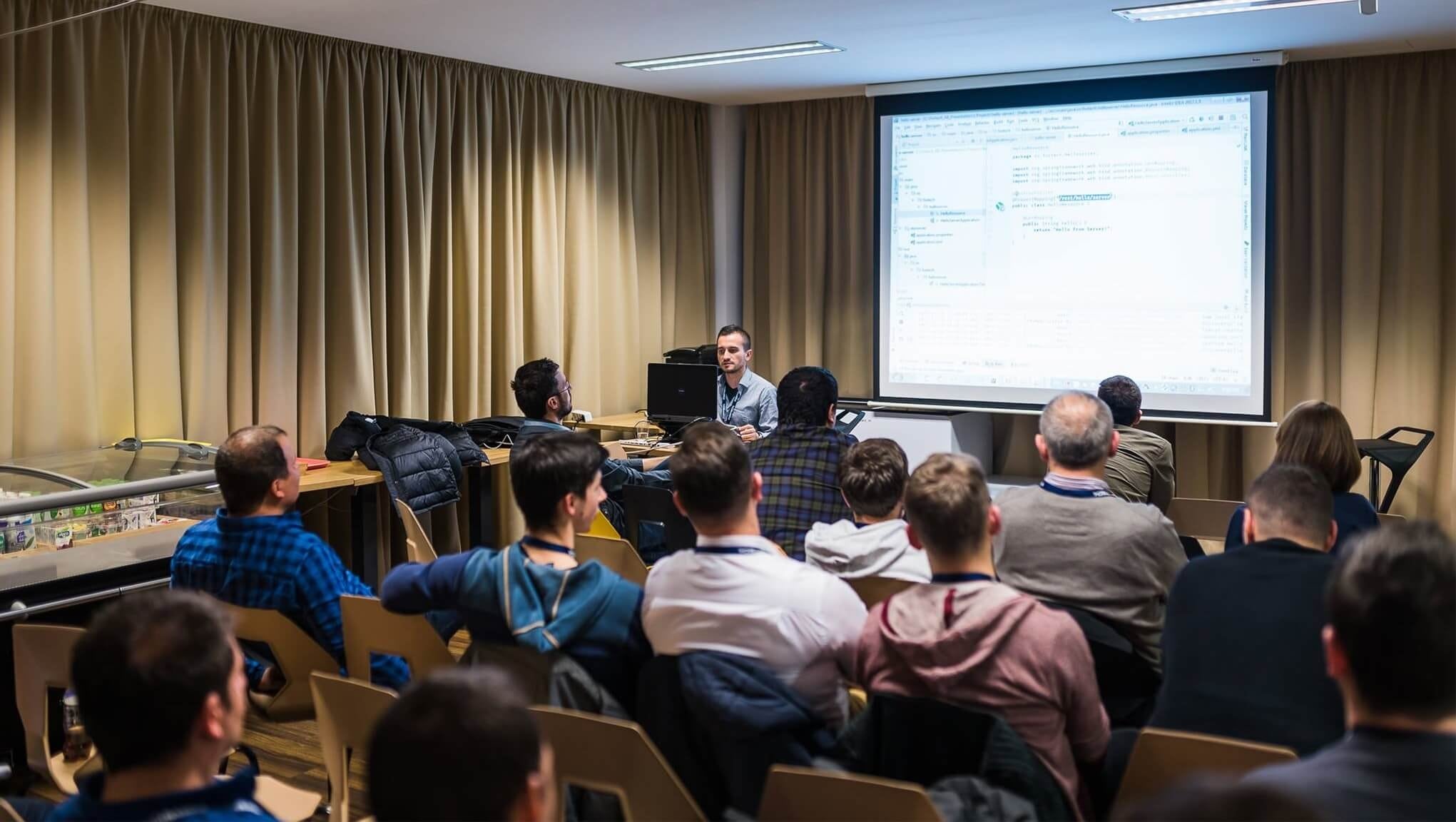
Sabin hosting a technical presentation on Spring Cloud.
Tell us a bit about the software project you are currently working on.
Since I joined the company, I’ve been working on a project for the automotive industry. Our client develops an in-car connectivity application for luxury car owners who want to have all details about their vehicle at their fingertips. The infrastructure connects millions of cars with external content providers in real-time and enables control and authorization for car hardware programming (scheduling, geofencing, etc.). We are significantly contributing to turning the connected vehicle into an intelligent vehicle.
The project passed through two major phases in the last five years. The first two years were focused on splitting the monolithic architecture into microservices. We started with Spring Boot and then evolved towards Spring Cloud. To demonstrate the commitment to this “microservices religion”, we even went to Barcelona for a 4-day conference called SpringIO. Here’s the visual proof:
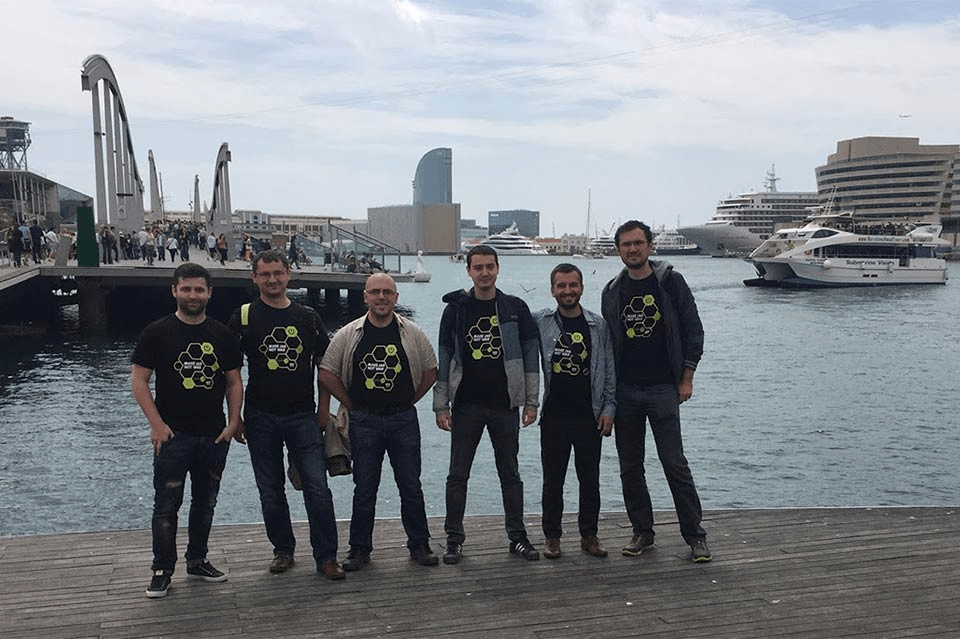
Sabin and his team at SpringIO conference, Barcelona, 2016.
The last two years were about shifting from on-premises infrastructure into the cloud. This migration had been attempted before by another software partner of our client, but with no results. Thus, our contribution to the project was highly appreciated. We completed this journey at the end of 2019, when all 120+ microservices were shifted to Azure Cloud.
In parallel to these two major phases, we were also involved in developing new features. We added new services for the cars. We also created or modified new implementation architecture inside the 7 microservices for which our team was responsible.
What’s the project’s tech stack like?
The applications and data we use are Java, Groovy, React, Node.js, an MySQL. We work with Spring Boot, Spring Cloud, Maven, and Liquibase frameworks. For DevOps activities, we use GitHub, DataDog, Azure, Chef, Nginx, and Docker. Data Storage is done in PostgreSQL, Kafka, and ActiveMQ. The business tools we work with are Mattermost, Webex, and Jira.
What’s your favorite thing about this software project?
Throughout the years, I’ve never gotten bored with the project. So, the fact that it is very dynamic and always offers learning opportunities is the most attractive part of the project.
What are the most challenging aspects of this software project?
The most challenging things on the project I also find most attractive. Keeping up with all the changes that happen inside the project and managing team members for the tasks required are probably the most difficult ones.
Tell us more about your team.
We are a distributed team. Our team includes 4 members located in Oradea and Cluj, and the client’s team has 9 people, 3 in Germany and 6 in Poland. We work closely together, despite being many miles apart. It feels like a close community, a second family.
My team in Oradea has some special traditions. We go out once every two months, either for lunch or dinner or for a more dynamic activity, like racing car driving or biking. Furthermore, we organize weekly meetings where we share knowledge on previously chosen topics. Currently, our weekly meeting is dedicated to collectively reading a book called “Kubernetes in Action”. Each team member should present an assigned chapter, using hands-on exercises based on the content they read. We practice this in a quite similar way to the Azure cloud service from Google. The activity is done just for the sake of learning new things together with the team.
Another activity we are involved in together is called MITIC – Monolith to Microservices Template to Intelligent Cloud. It is a small project aimed at helping other teams at Fortech by offering templates for microservices and clouding methodologies.
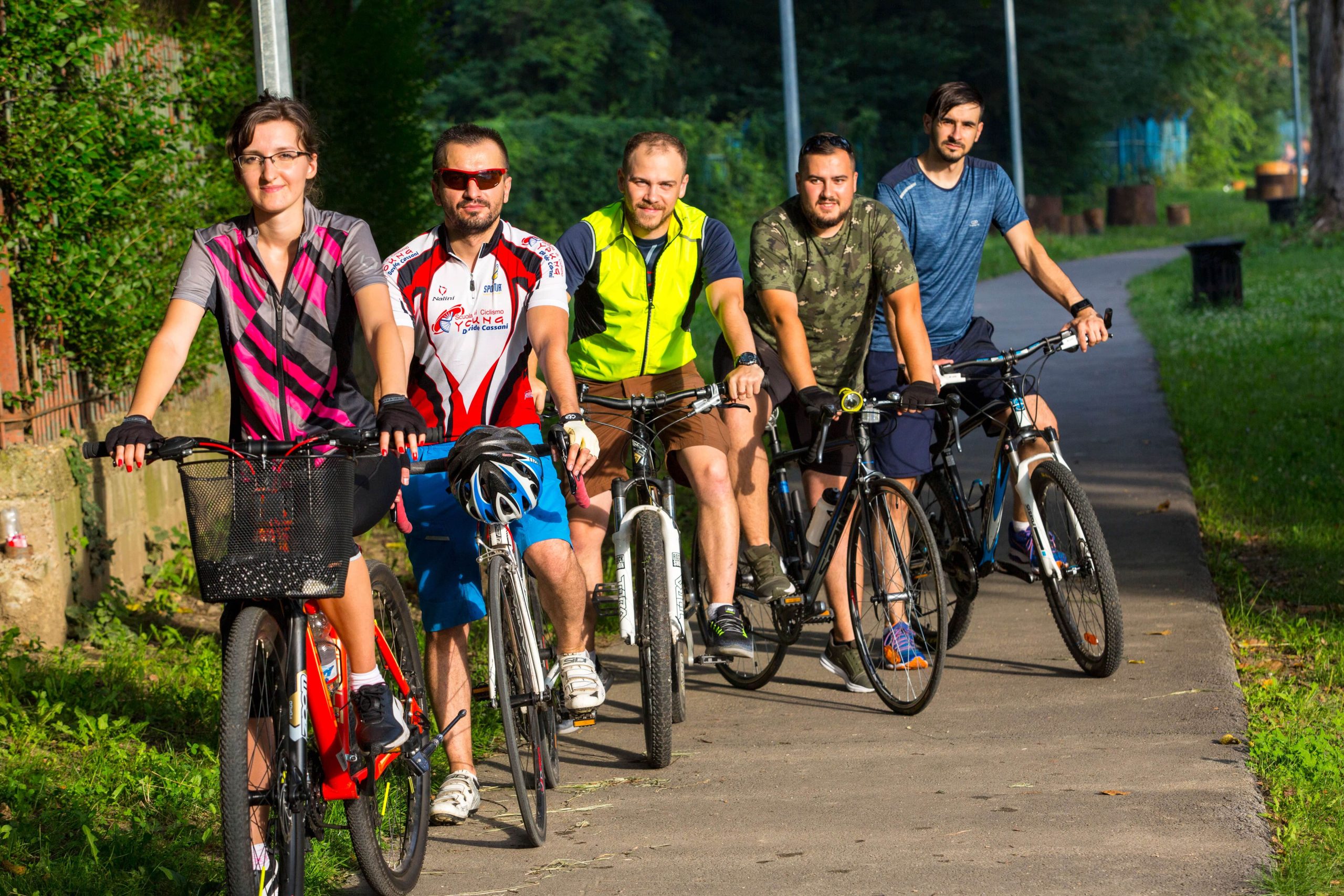
Sabin and a part of the Fortech Oradea team biking.
Recently, Fortech became part of GlobalLogic. What’s next in your career journey, and what do you expect?
For the near future, I have two main focuses in my professional growth. The first is to become better at leading people, an area in which I try to improve daily. The second is on developing the MITIC towards what one day may become an open-source platform that other programmers can use.
I feel good about Fortech’s new journey as GlobalLogic Romania. A global market brings global opportunities, and the future looks amazing. We are fortunate to have the chance to seize and value all these opportunities.

